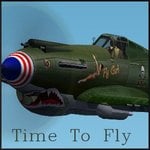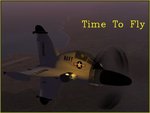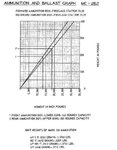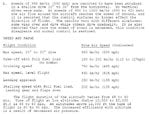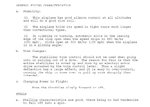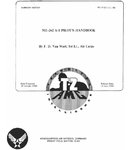Twitch said:The "best fighter" does not mean the best performance OK? It means it's effect on and place in history. That's why I choose the P-51. It was the catalyst that provided the resolve to continue daylight ops in the ETO. It was a better machine for the average pilot to excel in. It was on equal or better terms in any fight since the 190 and 109s that filled out the Luftwaffe's inventories were not dominant in every aspect such as they were compared to a P-40.
I'm sorry guys but the whole point is not comparing top speed specifications of prototypes that didn't meet P-51s. Is a P-51B/C's top speed of 439 at 25,000 feet blown away by a 190D-9s of 440MPH at 21,653 feet? (Most of the reference sources attribute 426MPH to the D-9 but that's irrelavent as is a small difference in top speeds.) That truly is meaningless and if you know the narratives of pilots on all sides you know that.
When I said it was eclipsed in speed by a "handful" the your top speed list proves that.
Arado 240- a few prototypes built, project terminated in 1942 well before it ever could have met the P-51
DO 335- again an scant few prototypes built that never saw action
Ta 152C/Ta 152H- 67 prototypes and pre-production aircraft ever built
FW 190D-9- Enough entered service to be valid at 1,805
Bf 109K-4 great plane, debuted in January 1945, more were lost to bombers than fighters
He 162- a few arrived at a minute to midnite on the Luftwaffe clock had no known encounters with P-51s
He 163- Bomber interceptor 370 built, had few kills against bombers none against P-51s known.
Me 262- a great machine but too few too late
Go 229- 2 prototypes built!
While I will champion the German technology brilliance anytime. There are actually many more fast planes from the Luftwaffe arsenal. We could put the Bachem Natter at 621MPH on there along with the Ju 248 aka Me 263. But looking up stats in a book doesn't begin to tell the story. Top speeds do not automatically place a plane in a "best of" category.
Again it's not whether the 190D-9 had superior performance in some aspects or the 262 was far faster. The Mustang was instrumental, as I believe, in the historical aspect of a placement in history.
This is all opinion anyhow so it matters very little. Hey I'm not an enemy here.
Henk- let's start a thread about the advanced German designs and see how many we can profile.
Twitch you seem to be trying to defend yourself here some what, you don't have to. I never said that you are wrong on anything you said, just not totally agreeing with you 100% either that's all. P51 was a great plane, its just some people think it was the best plane made in WW2. Now it depends, like we both have said, how do you determine or define what is the best plane. You are no enemy, never said you were. Its just very very hard to say "this is the best plane in WW2". It all depends what are you asking that plane to do? Ground attack? Fighter bomber? Pure combat fighter ? Long range? Short Range ? High or low altitude? One vs one? Trained pilots or green pilots? Etc etc

